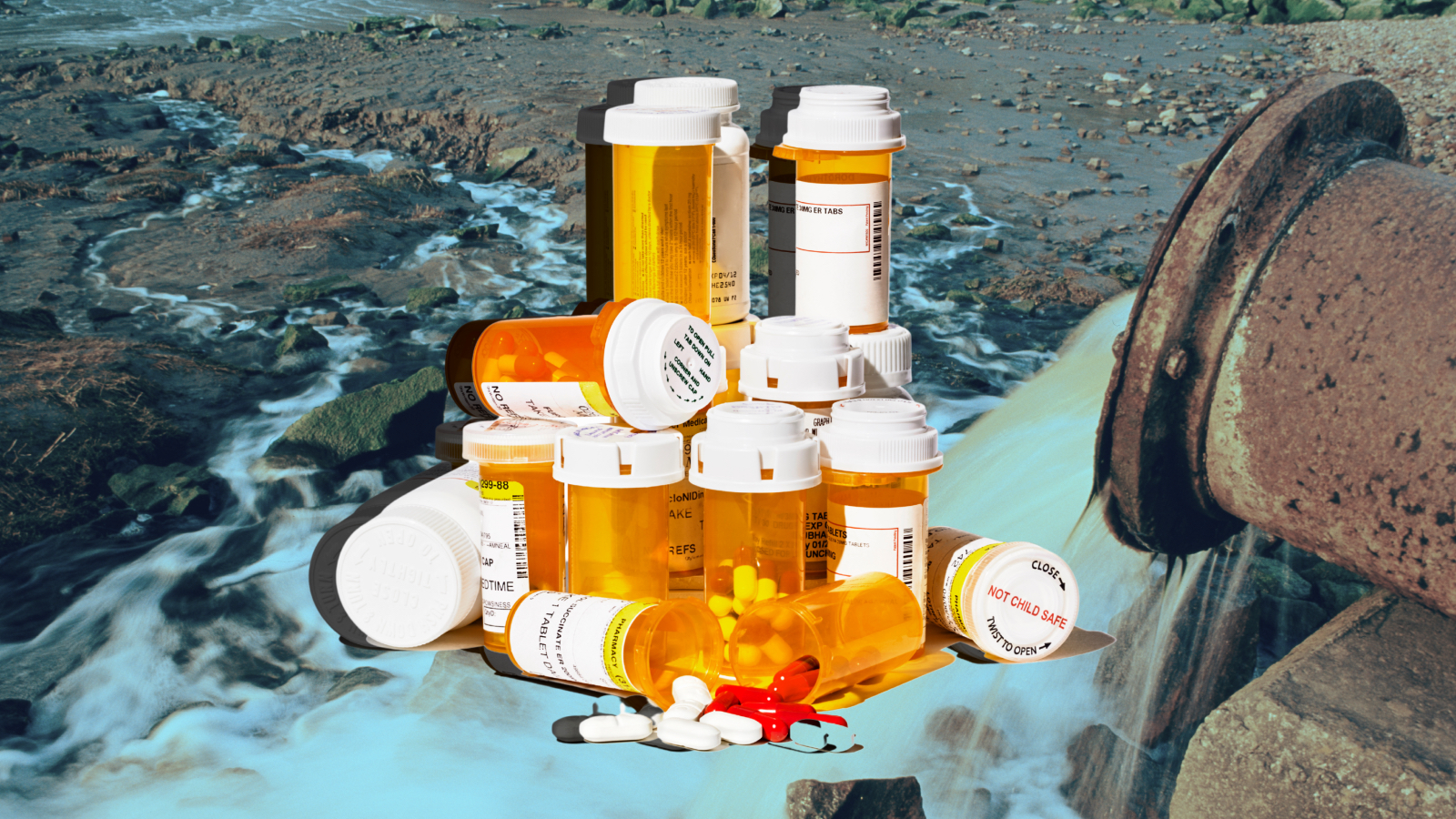Wynne Armand is a primary care physician at Massachusetts General Hospital, assistant professor of medicine at Harvard Medical School, faculty editor of Mass General Brigham’s internal knowledge network for primary care physicians, member of MGH Center for the Environment and Health team, Harvard Health contributing editor, and a Public Voices Fellow of The OpEd Project.
As a physician, I determine the most appropriate medications for my patients by answering a series of questions: How well does this drug work? Could there be drug interactions? Is it affordable?
Usually, I can find answers. But there is one question for which no answer is readily available for me as prescriber, nor for you as consumer: What is this drug’s environmental impact compared to acceptable alternatives?
Unquestionably, pharmaceuticals save lives. Yet they also contribute to shocking downstream environmental consequences. Active chemicals used in medications that end up in industrial, animal, and human waste may persist in treated effluents and find their way into drinking water, agriculture, and freshwater. For example, ethinyl estradiol, a synthetic hormone used in oral contraceptives, has been documented in treated wastewater and linked to dwindling fish populations and intersex fish with both male and female characteristics.
My colleagues and I frequently prescribe diclofenac, a common anti-inflammatory medicine that we use to treat pain. It has been used in livestock to treat pain, fever, and inflammation. In documented cases in South Asia, several species of vultures are now endangered because the drug, which they ingested by eating cattle carcasses, caused gout and kidney failure in the birds.
These are just two examples of how pharmaceuticals can have unpredictable and dire effects on the ecosystem.
Antibiotics are another dangerous pollutant, because they spawn “superbugs” — bacteria that are resistant to antibiotics — which can be spread through travel. India and China produce the bulk of the world’s active pharmaceutical ingredients (APIs) used in antibiotics, and according to a 2016 investigation, “dirty production processes and the dumping of inadequately treated antibiotic manufacturing waste” in those countries is fuelling their worldwide spread. There are now 18 multidrug-resistant organisms on the CDC’s list of “biggest threats,” with 3 million infections annually in the U.S.
Even if I prescribe an antibiotic that’s marketed in the United States, it’s impossible for me to know its full environmental impact. And that’s true for most drugs, because nearly half of U.S. medicines consumed are made with imported APIs, three-fourths of which come from India and China, where there are looser environmental regulations.
The only responsible way to evaluate a drug’s environmental impact is to consider its life “from cradle to grave,” from raw material extraction through drug distribution and after excretion. Two of the same drugs may have vastly different environmental biographies depending on the API source or what is included in a life cycle analysis.
Companies are required to perform an environmental toxicity assessment for most new FDA drug applications, however, these assessments do not take into consideration imported APIs used in a drug’s production, and there are exclusions that allow pharmaceutical companies to skip them entirely.
Most problematic: The FDA does not require that pharmaceutical companies make these assessments publicly available.
Emissions are another factor. The U.S. healthcare system is responsible for as much as 10 percent of the nation’s total emissions and more than a quarter of the world’s healthcare emissions. A large chunk of my carbon footprint as a primary care provider is in writing a prescription.
A growing number of pharmaceutical companies are voluntarily reporting carbon risk data in response to investor pressure. The stock market appears to react favorably, with an average market-adjusted 1.21 percent increase in stock prices following such climate change risk disclosures. But without requirements, it is still the minority that report consistently — one in eight of the 200-plus global pharmaceutical companies as of 2019.
Other countries are taking steps to improve. In 2005, the Swedish government joined forces with a pharmaceutical industry trade group to create a standardized environmental classification system available to the public on Swedish websites fass.se and Janusinfo.se. But the sites depend on the pharmaceutical companies’ voluntary participation. In 2008, the U.K.’s National Health Service began requiring its providers to routinely report their carbon footprints, which now include pharmaceutical emission estimates, with the goal of achieving net-zero carbon emissions.
The FDA should require pharmaceutical companies to make public standardized information on each drug’s environmental impact and carbon footprint in a comprehensible format, perhaps with consumer-friendly green, yellow, and red labels to denote impact. Similarly, this data should be integrated into the electronic health record so a physician can easily compare drug options in real time while seeing a patient.
Ultimately, we need global action to standardize a global pharmaceutical supply chain, similar to the 1987 Montreal Protocol, an international effort which phased out the ozone-depleting substance chlorofluorocarbon, previously used in inhalers.
Meanwhile, physicians are not entirely powerless. One measure we can take is deprescribing. A lot of patients — often those who are older or who see several doctors — end up on multiple medications, many of which may cause more harm than good. What can happen is an awful cascade — one pill causes a side effect, for which another is prescribed, which causes a new side effect, and so on. Deprescribing means that we reevaluate which medications are beneficial and which are better to stop. The end goal is patient well-being, but this has advantages for the planet as well.
Consumers can act in parallel by not stocking up on medications, including those sold over the counter, unnecessarily — and disposing of them properly. Americans spend $400 billion dollars annually on drugs, including $36 billion on over-the-counter medications, without understanding their comparative environmental effects.
Equipped with knowledge, I envision myself prescribing a pill equally effective but with a smaller carbon footprint compared to its kin in the same drug class, and my patient selecting a green-tier cold medicine from among the dozens on the shelf, and my local pharmacy contracting with drug manufacturers with clean supply chains. We, as prescribers, consumers, and citizens of this ailing planet, need information to make thoughtful decisions for ourselves, our patients, and our ecosystem.
The views expressed here reflect those of the author. Fix is committed to publishing a diversity of voices. Got a bold idea or fresh news analysis? Submit your op-ed draft, along with a note about who you are, to fix@grist.org.



